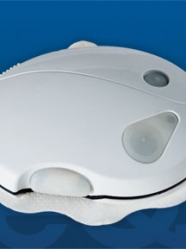CeQur’s PaQ Insulin Delivery Device Gains Approval in Europe
By Adam Brown

On November 28, CeQur announced that it had received CE Mark approval for its PaQ Insulin Delivery Device, allowing the product to be sold in Europe. The Swiss-based company has focused on bringing the PaQ device to the European market first, and it has not yet begun the process of securing FDA approval. No details have been shared on the product’s launch timeline, though clinical trial data will be presented at two meetings in 2013. PaQ is another simpler insulin delivery option designed for type 2 patients. Like Valeritas’ V-Go, CeQur is a wearable patch pump (no tubing) designed to provide basal-bolus insulin therapy for type 2 patients. As a reminder, the V-Go has been available here in the US since early 2012, and a recent user study suggests patients really like the device.
Insulin delivery for type 2 diabetes has long been an area of great need, since doctors have found it challenging to teach many type 2 patients how to take the optimal doses of insulin. Certainly, insulin pens represented great innovation, but particularly for patients needing multiple doses per day, it is great to see new options. Additionally, since many patients with type 2 diabetes do not require full-featured pumps (e.g., Medtronic’s Paradigm, Animas’ OneTouch Ping, Insulet’s OmniPod), and would also like more discretion, convenience, and simplicity than using pens and syringes. Products like the PaQ, V-Go, and J&J/Calibra Medical’s Finesse (bolus only) offer a nice middle ground between these two extremes. Indeed, these three pumps do not have screens, allow easy bolusing through clothing, and require no on-device customization or setup.
Besides their different geographic availability (V-Go currently in the US, PaQ eventually in Europe to start), there are some other key differences between the insulin delivery devices. Whereas the V-Go can be worn for 24 hours before it needs to be replaced (56, 66, or 76 unit reservoir), CeQur’s PaQ has a 330-unit reservoir that lasts up to three days. PaQ also allows for a wider range of basal rates than the V-Go, as users can select from seven preset basal rates (16, 20, 24, 32, 40, 50, or 60 units per day) vs. three for the V-G0 (20, 30, or 40 units per day). The key advantage of the V-Go is that it is purely mechanical and has no electronics, while the PaQ incorporates an electronic messenger that needs to be replaced periodically. As a result, the PaQ might be more expensive than the V-Go once it is launched, but there is limited information on pricing at present. –AW/AB







